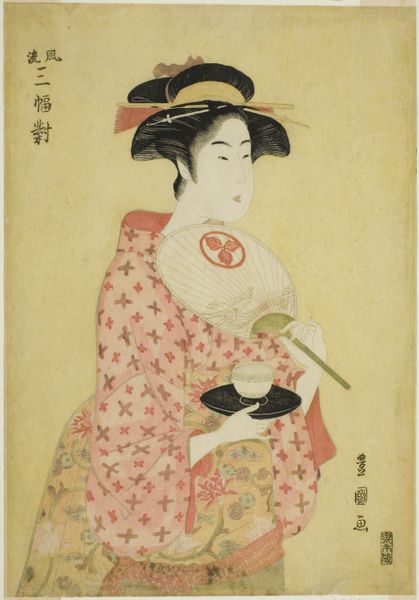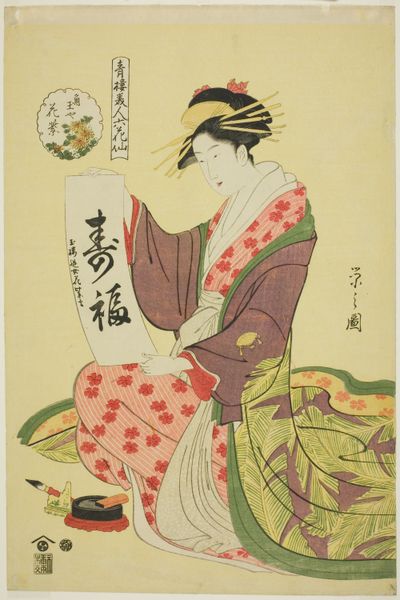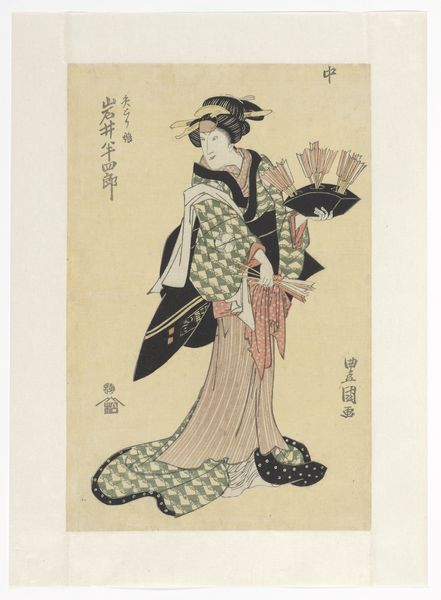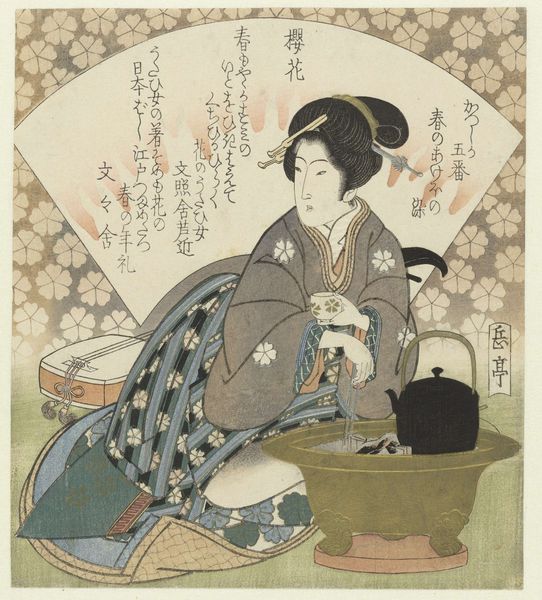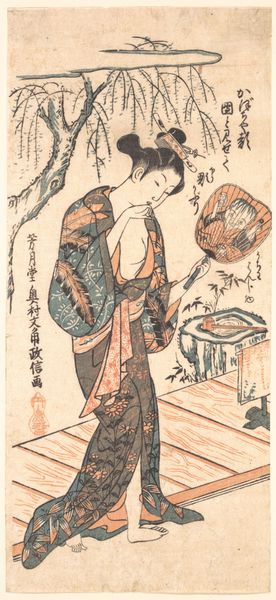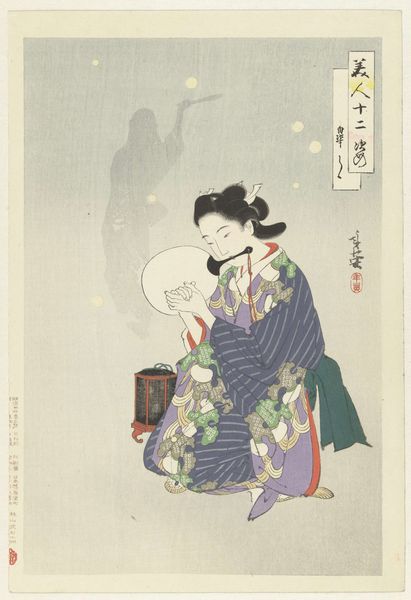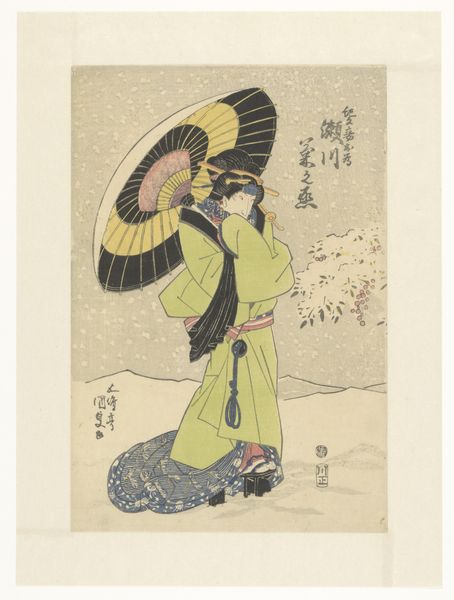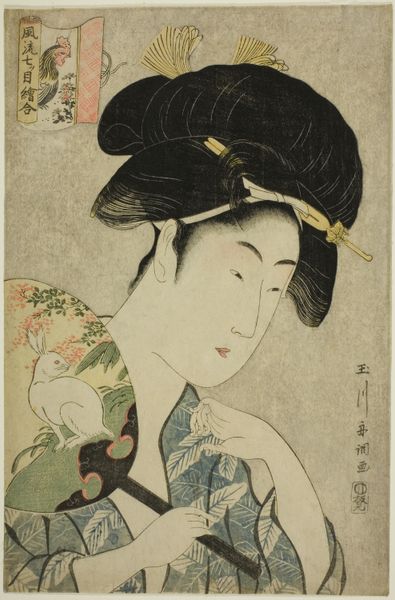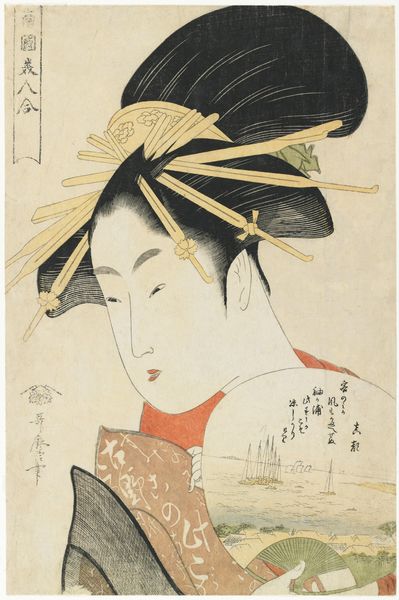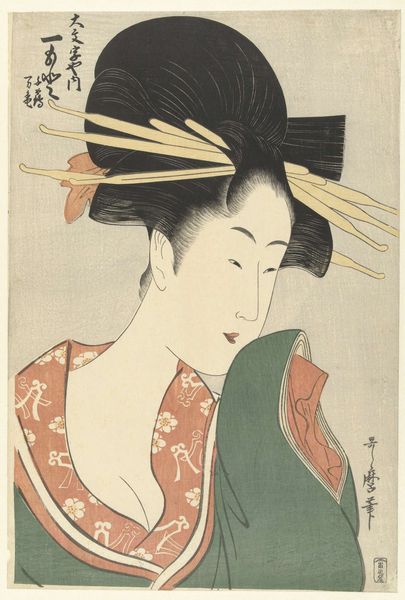
print, woodblock-print
#
portrait
# print
#
asian-art
#
ukiyo-e
#
figuration
#
woodblock-print
#
genre-painting
Dimensions: height 382 mm, width 250 mm
Copyright: Rijks Museum: Open Domain
Curator: Let’s turn our attention to this woodblock print, “Portret van de serveerster Okita,” by Utagawa Toyokuni I, created sometime between 1790 and 1800. It resides here at the Rijksmuseum. Editor: The poise of the figure, her serene expression, it exudes such quiet elegance. The gentle color palette adds to the peaceful mood. Curator: This print provides insight into the popular culture of Edo-period Japan. Utagawa Toyokuni I was a leading printmaker, known for his portrayals of actors and beautiful women. It speaks volumes about the status of Ukiyo-e art in popular imagination during its production. Editor: I'm immediately drawn to the fan she holds; it feels more than decorative. Does it serve as a barrier, or is it more of a screen? Curator: These prints of women reflect the artistic conventions that catered to the rising urban class of the period. In it, we find not simply aesthetic pleasure but also a fascination with the world of geishas and the urban amusement districts. Okita's fan, her attire, would be symbolic, a visual language that signaled specific aspirations or connections within the urban landscape. Editor: Look at the motifs on her robe. The crane often symbolized longevity and good fortune. Is her presence here a celebration of daily life or perhaps more aspirational, as if depicting idealized virtues? Curator: The role of the artist cannot be separated from the cultural narrative they shape, so understanding how Toyokuni intended these figures to be viewed – as reflections of a social standard or as active shapers of it – reveals how image-making influenced Japanese society. Editor: Understanding these artistic gestures enhances our engagement and appreciation for Japanese aesthetics. Thanks to that context, the emotional resonance deepens, and her composed expression feels warmer and much less opaque to me. Curator: That's the power of this portrait – it preserves a single moment, revealing how both art and everyday realities intersect to form social perception. Editor: Precisely! It seems we have peeled away some new layers.
Comments
No comments
Be the first to comment and join the conversation on the ultimate creative platform.

